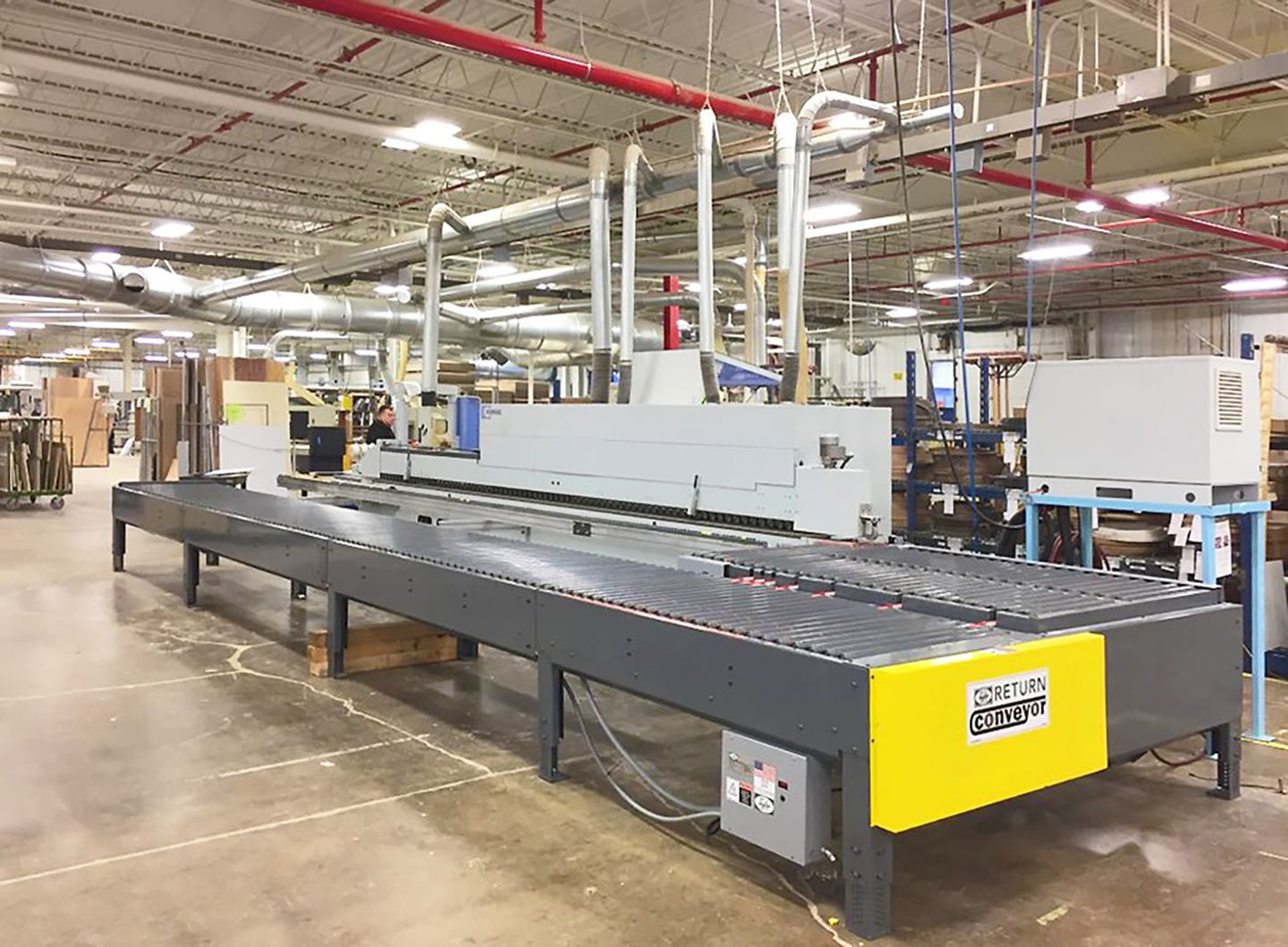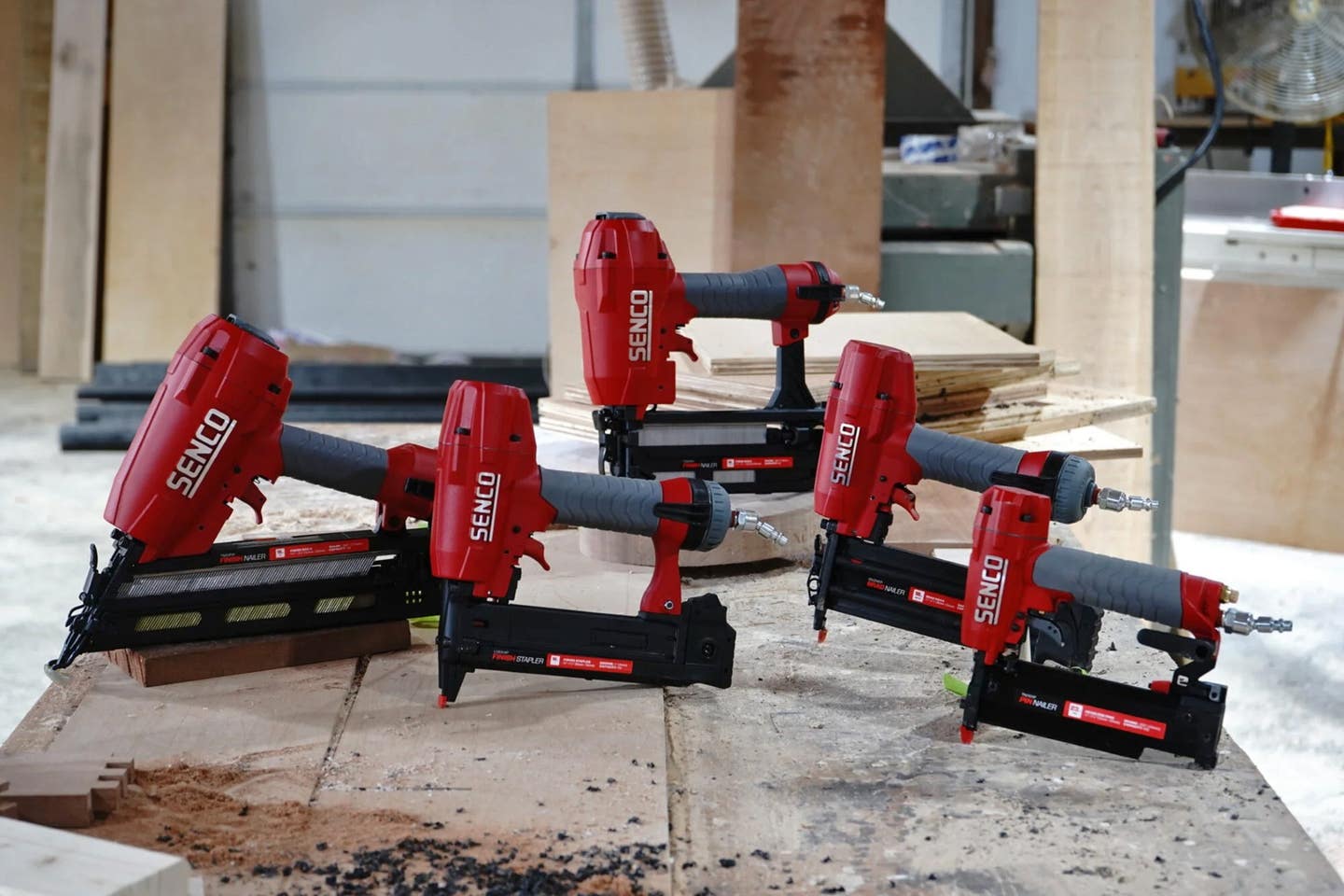The last decade has been a lot of fun for tool nuts. Portable power has traveled at warp speed from feeble rechargeable screwdrivers to battery powered table saws and planers. Along the way, a new generation of brushless motors has combined with lithium-ion batteries, faster chargers and Bluetooth software. Accessories such as portable saw guides and advanced storage systems with tracking devices have made it a whole lot easier to bring the shop to the jobsite. That lets woodworkers provide more customized solutions and better customer care, and do so faster than ever. Working on the jobsite can also free up physical space back at the woodshop, and that potentially means more machines, increased inventory, better assembly spaces and ultimately more work flowing through the shop.
Lithium-ion batteries
If you’re thinking of buying a battery powered miter saw, table saw, dust collector or other woodshop machine for portable use, it helps to understand something about lithium-ion cells. An ion is an atom or a group of atoms that has the ability to carry electrical charges, and lithium is the lightest metal that we’ve discovered to date. Lithium can be found in almost every type of rock on the planet, so it’s no surprise that its name is derived from the Greek word for stone, lithos.
A Li-ion cell is a component inside a battery. Each cell has a positive electrode (conductor) that’s called a cathode, and this is usually a compound of lithium combined with iron phosphate or cobalt oxide. That’s because both iron and cobalt are good conductors of electricity. The cell also has a negative electrode called an anode, which is made from carbon in the form of graphite. Lithium ions flow between these two through a chemical soup (salt in an organic solvent) called electrolyte. The ions flow from the negative electrode to the positive electrode when you pull the trigger on a power tool, and they flow backward when the battery is plugged into a charger. As the ions move through the soup, electrons move in the opposite direction around the outside of the cell and these are the electricity that drives the tool.
Basically, the more cells there are in a battery pack, the more power it delivers.
Brushless motors
After power sources, perhaps the biggest change in jobsite tools has been a surge in brushless motors. They’ve been around for half a century, but only lately have become quite popular. One reason is that they are smarter than the average motor.
The motors in older tools have brushes. Take, for example, a router. There will be a couple of large pan screws on the sides of the motor housing, and when you unscrew one of them a small block of carbon on a spring pops out. That’s a brush, and because the motor rotates they wear down over time (hence the spring). When you pull a trigger or turn on a tool, electricity travels through the brushes into a rotating device called a commutator. Inside this is an armature, which looks like a bunch of copper wires rolled together. The commutator passes a charge to the armature and this makes it magnetic. Inside the armature is a small bank of magnets, and when the polarities of the magnets and armature are the same, they resist each other. That makes the armature spin (rotate).
The new generation of brushless motors have replaced the commutator and its brushes with electronic controls. In addition, the magnets are on the shaft and the armature no longer spins. The new generation controls are simple but sophisticated, and they adjust the amount of power being delivered according to the task you are performing. So, if you are routing foam to line a toolbox, there is very little resistance and the brushless motor uses hardly any battery power. If you’re routing grooves in hickory, the motor will run faster and deliver more torque.
There’s no physical contact between brushes and spinning parts anymore, and there’s more room inside the motor to add more copper to the coil, so brushless motors tend to be a little more powerful, too.
Bluetooth tools
How many apps are on your phone?
It seems everything we do now requires downloading an app, and jobsite tools are certainly no exception. Various manufacturers use wireless connectivity to monitor and even control how tools behave, watch for overheating or stress, and track use.
Some wireless apps are designed to avoid potential injury, such as one that turns off a drill if the bit gets stuck and the tool starts to rotate. Others keep track of maintenance schedules, or even report back to the manufacturer when something is out of sync. There are apps that tell the boss how much and even where the tool was used, which can help with billing issues.
Apps can keep owners up to date on new accessories or supplies, which in some cases is just a marketing ploy. Bluetooth is also being used to turn dust collectors on and off as the tools that they’re connected to are powered up or down. Turning on the Bluetooth feature for this can be app controlled, or can be a physical function such as touching a control on the machine, the hose or the vac.
When you’re shopping for woodworking tools and machines to take to the jobsite, be aware that some product lines include Bluetooth features as standard, some offer connectivity as an optional upgrade, and some let you upgrade existing tools with these features. And for those who prefer to make sawdust rather than play with apps, most manufacturers still offer traditional tools that don’t require a phone. Heck, some even have cords on them.
Jobsite shopping
Woodworkers who are buying cordless tools for the jobsite may want to keep a few things in mind. It’s a good idea to buy batteries with built-in fuel gauges. Most of the better brands offer this, and it helps avoid unexpected downtime, especially when some of the larger tools are running on batteries in sequence. Lithium-ion cells can hold a charge for a long time (up to 18 months), but they do trickle down when they’re sitting on the shelf.
Next, check out the physical weight and size of the battery pack. If you’re pinning moldings high on a wall or otherwise working above your shoulders, even a few ounces can make a difference to your muscles by the end of the day.
An Amp hour (Ah) is simply the amount of current (in amps) that a battery can deliver in one hour. Here’s the thing: you want a battery to discharge at a measured pace, so it doesn’t create excess heat. A higher Ah rating means there’s more fuel in the tank, so the battery provides more power than the tool consumes. Heat is the enemy.
Fast chargers are available for many batteries, and they’re probably a good idea overall. For one thing, a woodworker will need fewer battery packs if the ones he/she owns are recharging faster than they are needed. However, a word of caution: there are some studies that seem to indicate that fast charging can damages the electrodes, which in turn diminishes the capacity to fully charge and also may shorten the cells’ lifespans.
There are some interesting options for charging now, including devices that can recharge tools from a vehicle battery through a USB cord, or by plugging into a 12-volt outlet. Other devices allow the tool battery to charge cellphones or other USB devices such as tablets using an inverter that delivers both USB and 120-volt AC flows.
One of the newer trends is a power tool that can use any voltage battery from the tool manufacturer (usually 12, 18, 20 or 24 volts). Multi-voltage tools are not voltage-specific, so you can run the same tool on different batteries. You just get less power/time from a smaller battery. A variation on this is the ability to run some tools on either battery or AC (wall plug-in) power, which means the same tool is both cordless and corded. Basically, it’s a cordless tool with a transformer that reduces 110 volts to whatever the tool requires.
If you see the phrase ‘long life cycle’ on a battery pack, the manufacturer is saying that the pack will take more charge/discharge cycles over its complete lifetime than other batteries, while still maintaining more than 80 percent of its capacity.
Despite some reports to the contrary, Li-ion batteries don’t seem to suffer from memory effect. This is a condition that plagued earlier cells such as nickel-based batteries, where the electrodes and the electrolyte managed to react with each other and create salty residue. The result was that the battery would ‘remember’ that the tool had only used part of its storage capacity, and eventually it would reduce its capacity to that level.
Almost every charger on the market now has an automatic shut-off. That means the battery can be safely left in the charger and won’t overcharge. If you have older tools, this may not be the case. Check your owner’s manual.
Finally, one of the new trends from manufacturers is the power station, which essentially is a giant battery that can be charged overnight at the shop and then taken to the jobsite to recharge power tool batteries as needed. This may be a better option than buying lots of spare batteries, although it can also be a spendy choice.
This article was originally published in the November 2020 issue.







